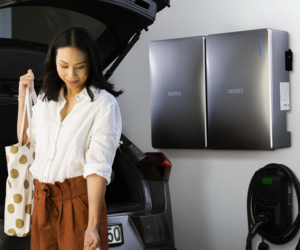An unspoken problem with Australian residential solar
Undersized solar systems are under-serving homes nationwide
With the highest number of residential solar installations per capita on earth, Australia is the darling of the solar world. Data from Clean Energy Council reports that Australia is home to 3.5 million systems, meaning that 32% of all single dwelling homes in Australia have a solar system on their rooftops. Clean Technica reports that this figure comes in close to 82% in Queensland!
And while this data reflects the enthusiasm of Australians to adopt residential solar, it doesn’t necessarily confirm that those systems are cutting the mustard. For early adopters, many of these systems are woefully undersized – not even coming close to covering the electricity needs of those homeowners.
In the early days of the solar boom, coupled with rebates that incentivised 1.5kW systems, the average solar system size before 2012 was under 3kW and by 2015 was still under 4.5kW. With average daily household usage of 20kWh, these systems were barely touch the sides with the available solar energy for the home.
But homeowners weren’t too worried about that. In fact, most didn’t want to use their solar energy at all. In those early days, additional government-incentivised rewards for ‘exporting’ your solar to the grid meant that homeowners were penalised for using their solar by the opportunity cost of the revenue they could earn from pumping that solar into the grid. So at this time, many systems were earning back more than the cost to purchase and install – the ultimate win for finance savvy homeowners. (As an aside, this is the moment that the trap of Solar Payback was born; the concept that generating your own power for use in your home was only worth it if it could pay itself off. The confirmation of this concept was vindicated by those sizable electricity Bill Credits which were granted almost every quarter; a regular and delicious spike of serotonin to validate solar owners for their decision to take advantage of government rebates.)
Fast forward, and the government-mandated rewards for exporting your solar (solar feed-in tariffs) have dropped dramatically (as planned), electricity prices have risen dramatically (unplanned), and the climate crisis has us over the precipice trying to claw back. Expensive and problematic from a health point of view, ‘natural gas’ power is an increasingly unappealing option, and rising petrol prices (as well as the desirability of electric vehicles) are contributing to the zeitgeist dominance of full home electrification” a home-powering approach that promises that more machines powered by sustainably-sourced electricity is the last bastion of hope to turn around carbon emissions with enough speed to make a difference.
So where does that leave the early adopters? As mentioned, with average daily household electricity usage 20kWh and rising, and most of that usage after the sun has gone down, those 1.5-3.0kW solar system s(think 9 to 18kWh solar generation on the very best days of summer) are chronically under-serving their owners.
So for solar owners faced with this issue, what’s the solution? The obvious choice seems to be adding more solar panels, right? But with the compliance and compatibility issues of older panels and inverters, it can be more economical to remove the original system (at cost) and replace with a new, more efficient, cheaper-per-Watt, larger system. While this approach might seem immediately appealing, it’s unfortunately wasteful, and there aren’t a large number of readily available recycling systems for homeowners, or a second-hand solar panel and inverter market to hand. Additionally, solar owners on long-term high solar Feed-in-Tariffs would lose those benefits in the process of installing a new system. And as a complex installation process, it may be difficult to find a solar reseller that’s willing to take on your project when there is a bank of easier, more profitable new system orders ready to go.
For many, that means inertia; living with the status quo, and even with a functioning solar system, seeing electricity bills and (fossil fuel usage) continue to rise. Thousands of solar owners across Australia are stuck with a system that’s no longer fit for purpose – something which is particularly painful during a cost of living crisis.
As an industry, solar providers need to start informing customers with undersized systems that there is a reasonably good solution: by adding additional solar panels with a hybrid energy storage system (battery and inverter), solar owners can manage both their older systems and the newer systems together. This integration can provide the additional benefit of access to that valuable solar energy during the evening, or when there is cloud cover during the day; not to mention the convenience of at least one circuit of accessible electricity in the home in the event of a blackout.
Figures from the Climate Council show that even adding a 4kWh battery to a 5kW solar system can increase the amount of self-generated solar electricity a household consumes from 30% to 60%. Now is a great opportunity to let solar owners with under-sized systems know that there is another step they can take in their solar journey to right-size their system to their current and future usage and help get their bills under control.



